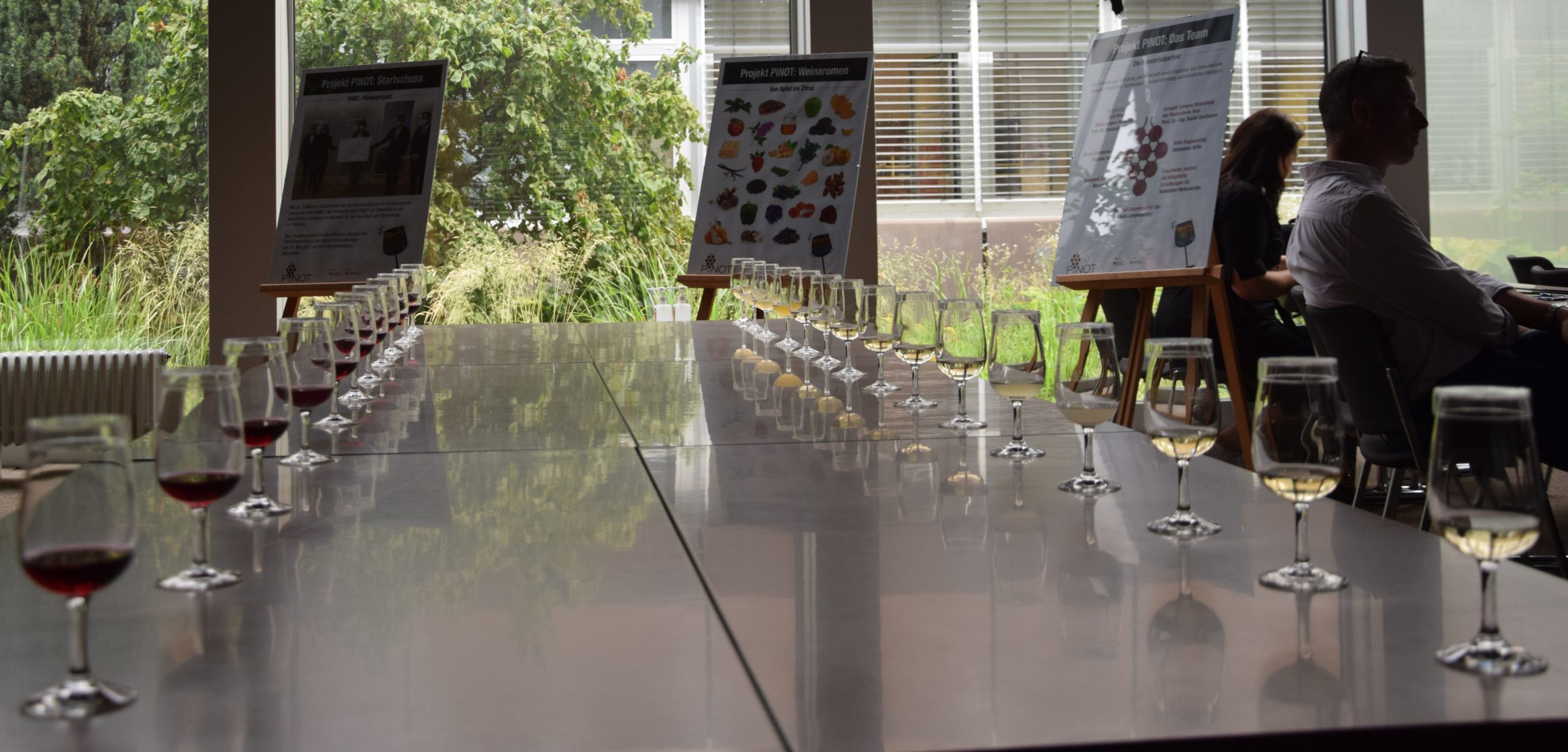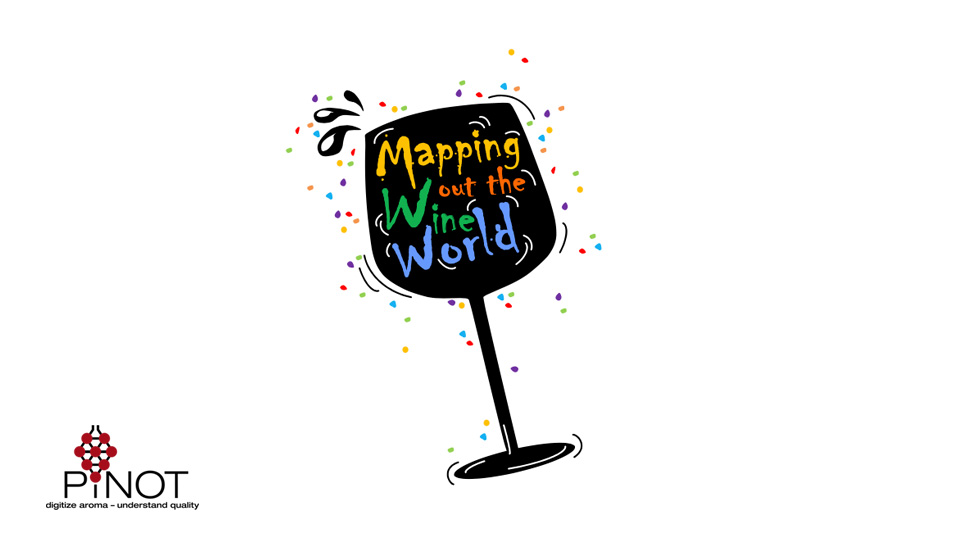
With this motto, a wine tasting took place on 21.07.2022 as part of our research project PINOT. 24 participants from the wine business accepted our invitation and joined us on this – partly very challenging – journey.
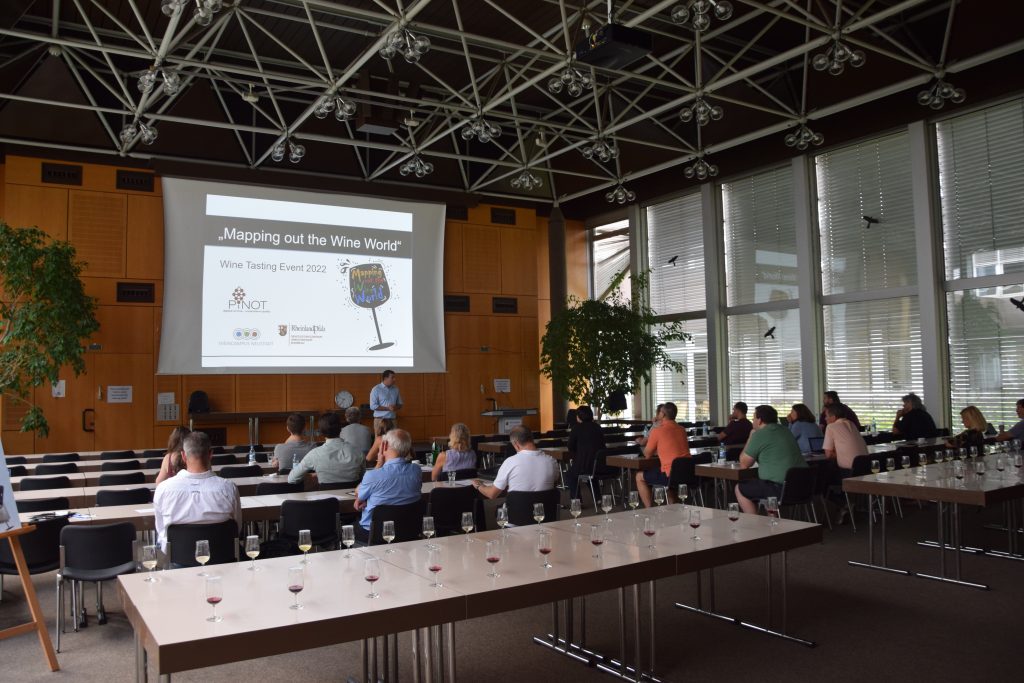
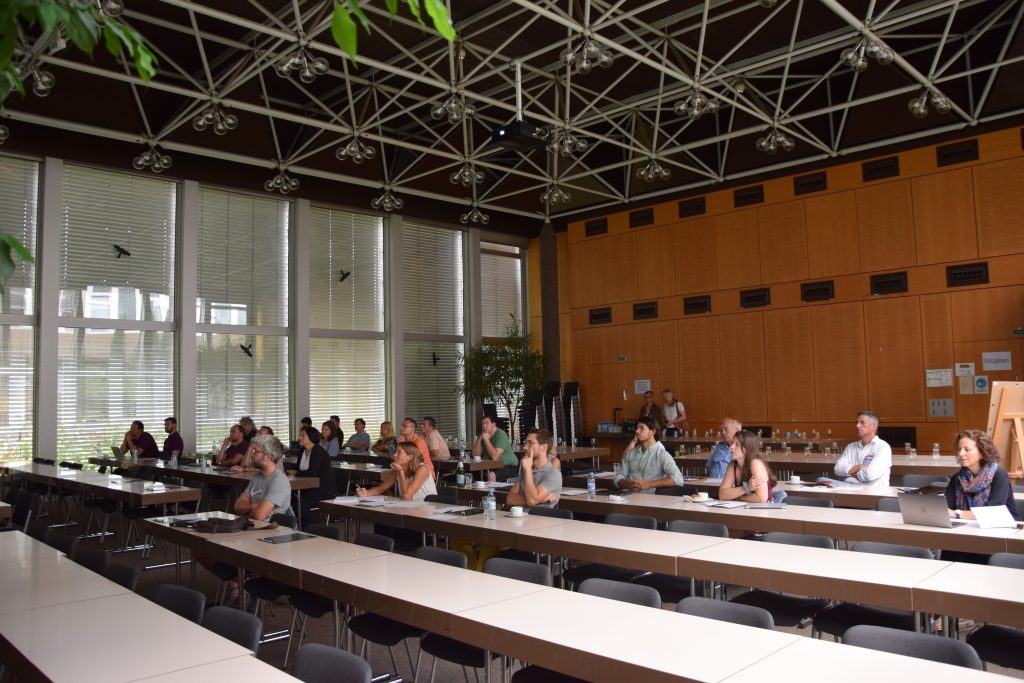
To be able to correctly interpret the sensor data that we will soon receive from our first experimental setup, we first need a human sensory panel for verification. In concrete terms, this means that we need to collect data from wine experts, analyze it, and later compare it with the data from the sensors.
A total of 48 different wines from all regions of the world were tasted. However, we focused on 6 grape varieties – Chardonnay, Sauvignon Blanc, Riesling, Pinot Noir, Cabernet Sauvignon and Syrah/Shiraz – and their extreme styles from a wide range of climates.
First, in the morning, the participants were introduced by Prof. Dr. Dominik Durner to the procedure and the background to the topic. Afterwards there was the opportunity to sniff the individual aroma categories to be evaluated to calibrate the nose.
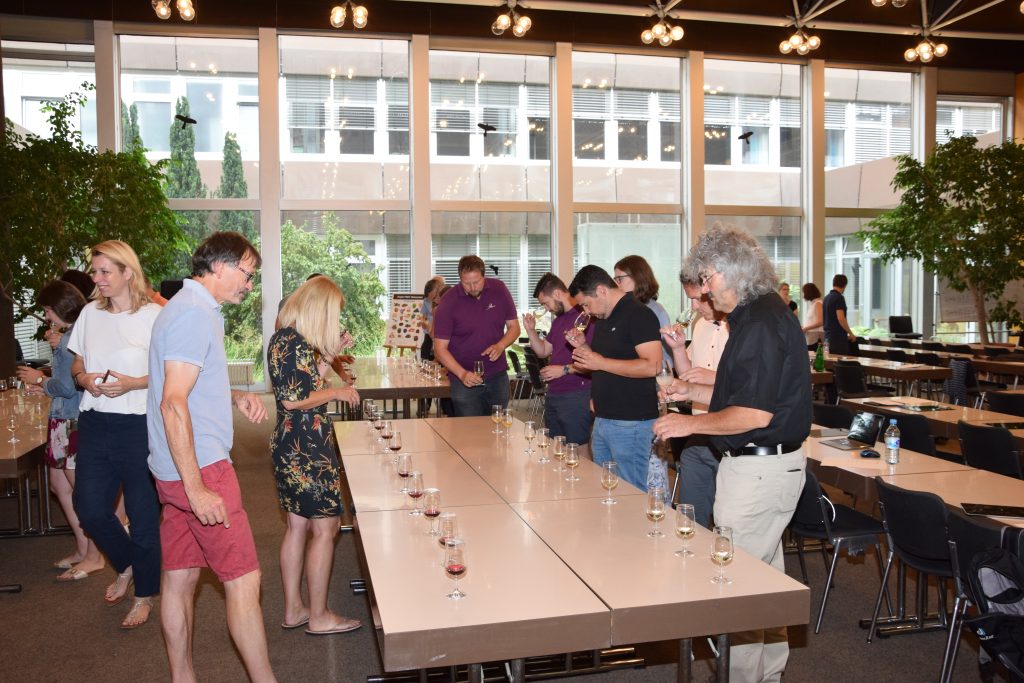
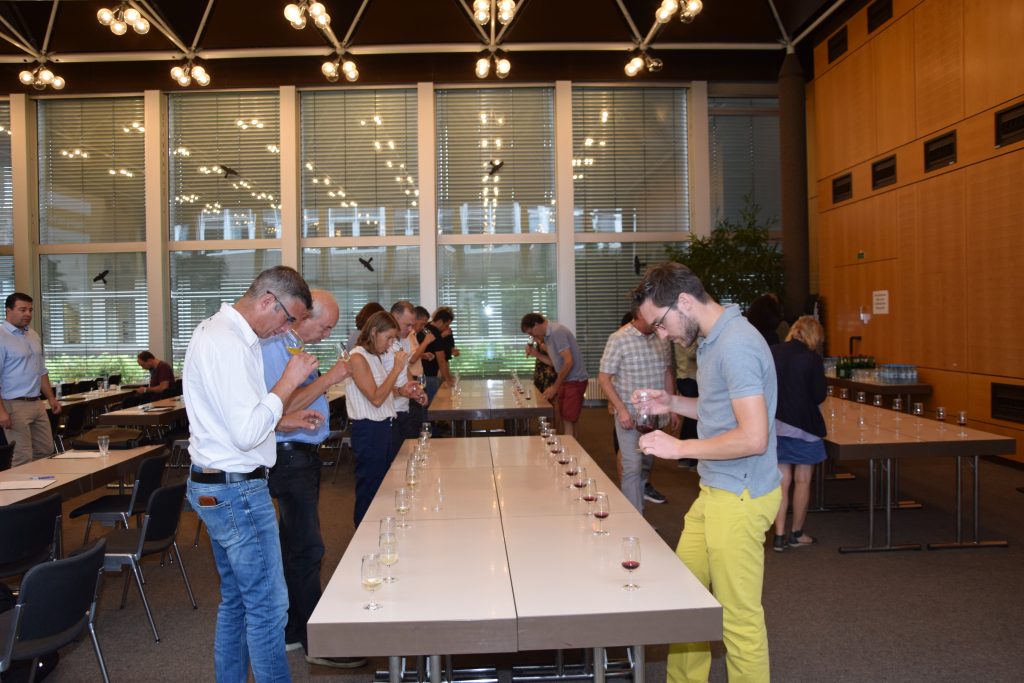
The first session was the most exciting and also the most challenging. All 48 wines that were to be used on this day were sniffed blind and in black glasses. So it was simply a matter of what does the human nose smell when the visual factor is missing? Did one smell red fruits or rather green ones? Was wood involved or not? On the basis of 17 aroma descriptors, which were to be evaluated on a scale, the wine experts had to classify the respective sample within about 1.5 minutes.
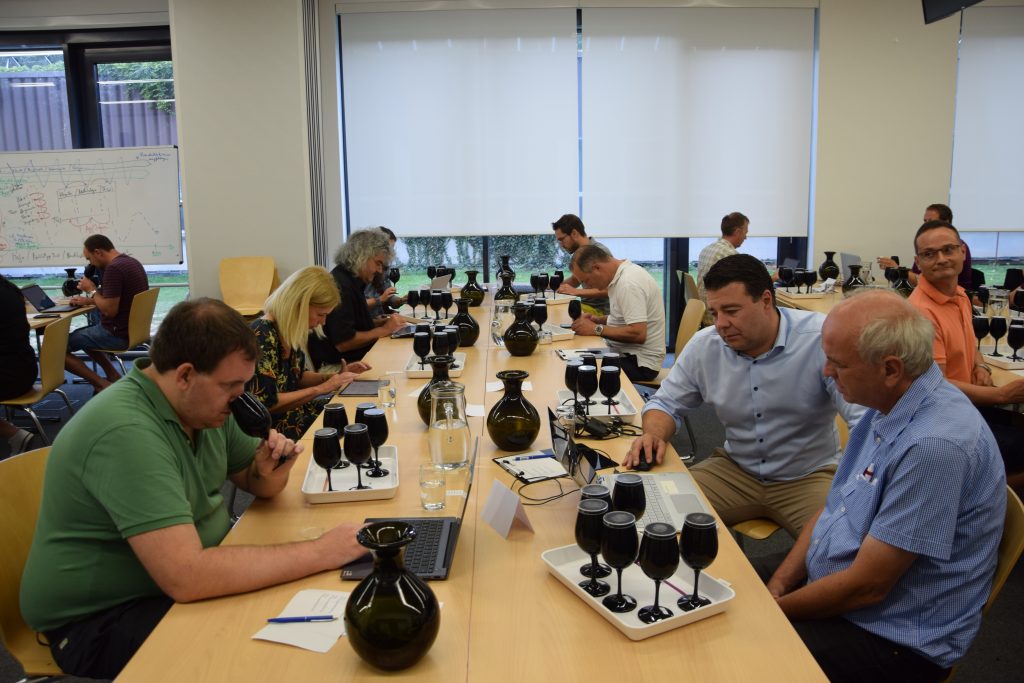

After a one-hour lunch break, which was also used for lively exchanges and networking, we moved on to Session 2.
Now there were 24 wines for everyone to taste in any combination. Each participant was provided with their own tray containing 24 wines from a randomized selection. As in round 1, the wines were evaluated by means of a digital tool, this time additionally according to 4 color and 6 taste characteristics.
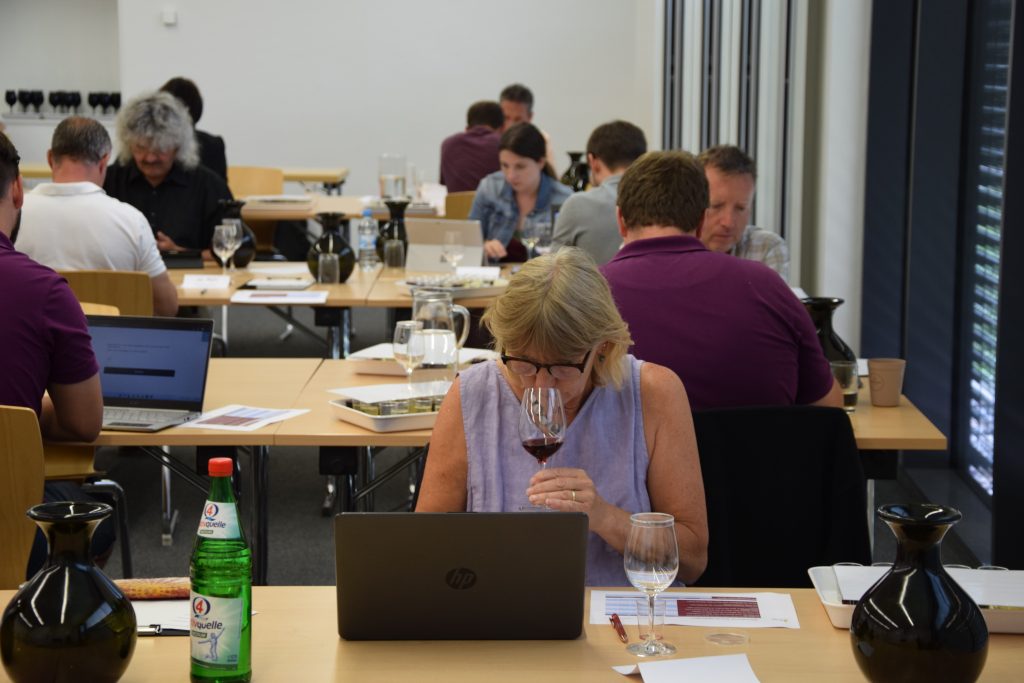
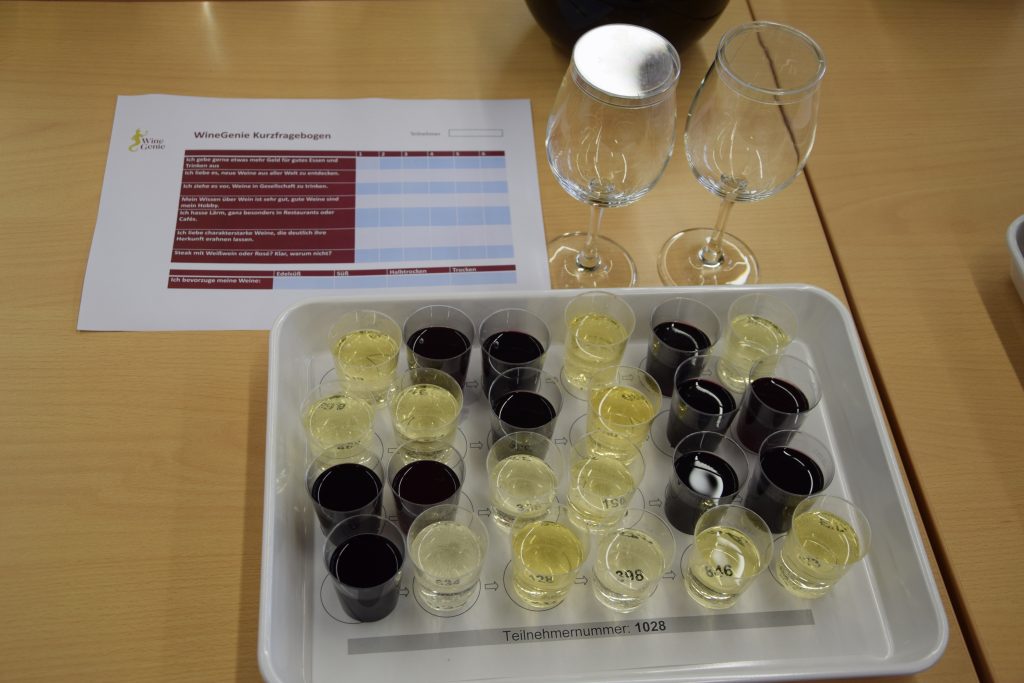
Nose and palate then had the opportunity to recover again during a half-hour break before moving on to Session 3. This time, the wine experts were again given 24 randomized white and red wines to taste. Unlike in Session 2, this time a list was also provided that revealed which grape variety and growing region the samples were from.
Finally, the identity of all the wines was revealed and there was an opportunity to compare individual impressions.
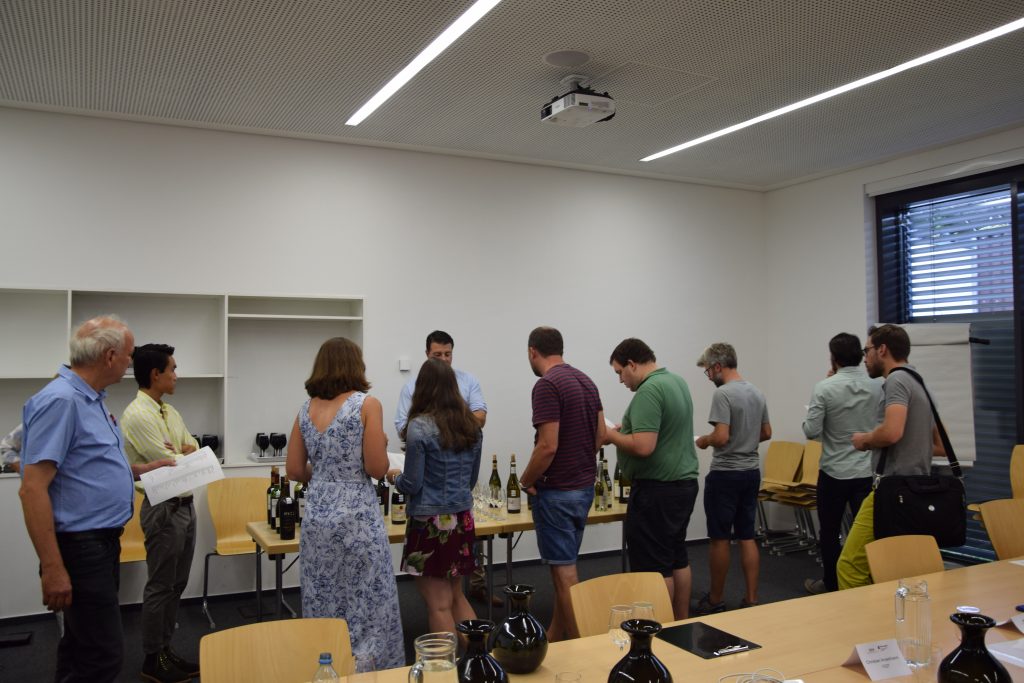
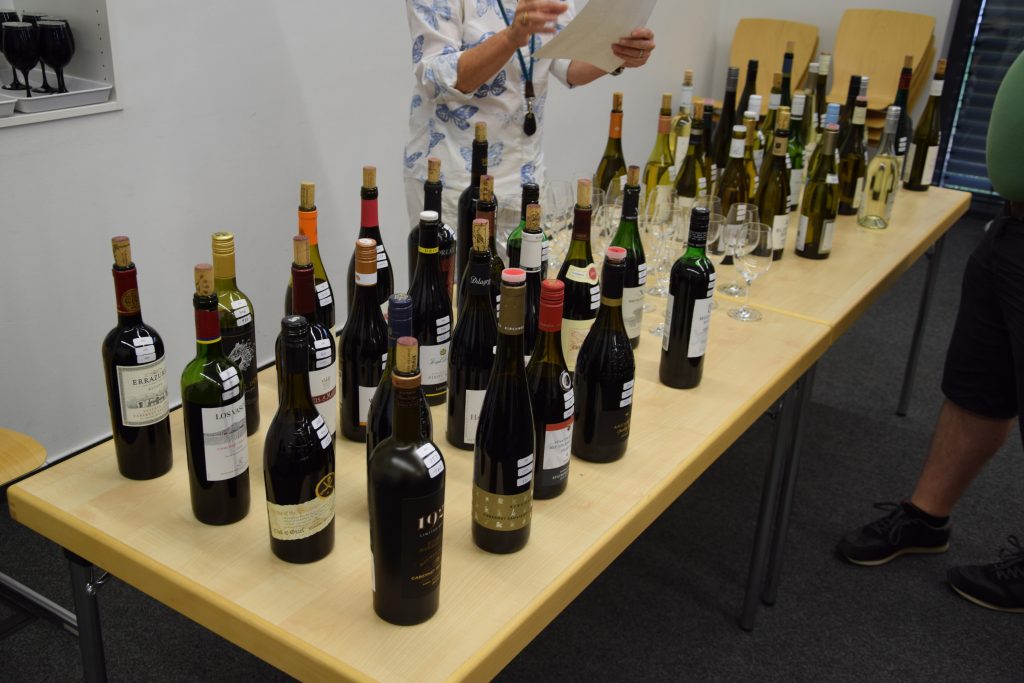
For the research project, we were thus able to obtain data that showed us, on the one hand, how much humane, subjective evaluations differ from one another and, on the other hand, how much the evaluation is influenced by existing knowledge.
We would like to take this opportunity to thank everyone who supported us so energetically. Many thanks to the wine makers who took the day off to support us for our project.
